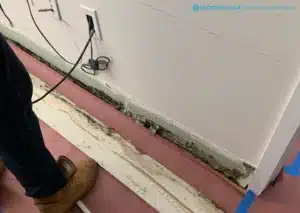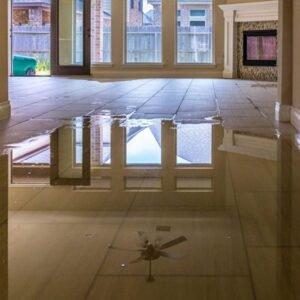The Dangers of Water Damage in the Bathroom
Water damage in the bathroom is a common problem that many homeowners face. Whether it’s from a leaky shower or a burst pipe, water damage can cause serious issues if left untreated. Not only can it lead to mold growth, but it can also damage the structural integrity of your bathroom. In this blog post, we’ll discuss the causes of water damage in the bathroom, how to prevent it, and what to do if you find yourself dealing with this issue.
The Causes of Water Damage in the Bathroom
There are several factors that can contribute to water damage in the bathroom. The most common causes include:
- Leaky pipes or fittings
- Cracked or damaged tiles or grout
- Improperly sealed shower or bathtub
- Malfunctioning toilet
- Excessive moisture and condensation
In addition, older homes may have outdated plumbing systems that are more prone to leaks and water damage. It’s important to regularly inspect your bathroom for any signs of water damage and address any issues as soon as possible.
Water Damage from Shower
One of the main causes of water damage in the bathroom is from the shower. Over time, the constant exposure to water can cause damage to the walls, floors, and even the subfloor of your bathroom. This can lead to mold growth and structural damage if not properly addressed.
The most common sources of water damage from the shower include:
- Leaky showerhead
- Cracked or damaged tiles or grout
- Loose fittings
- Improperly sealed shower enclosure
If you notice any water stains or discoloration on the walls or ceiling near your shower, it’s important to address the issue right away to prevent further damage.
Water Damage Bathroom: What to Look For
Aside from visible signs of water damage, there are other indications that you may have water damage in your bathroom. These include:
- Musty odors
- Peeling paint or wallpaper
- Bubbling or warping of walls or floors
- Visible mold growth
- Discoloration or staining of surfaces
- Soft or spongy areas in the flooring
If you notice any of these signs, it’s important to act quickly to prevent further damage and address the issue at its source.
Preventing Water Damage in the Bathroom
While it’s not always possible to prevent water damage in the bathroom, there are steps you can take to minimize the risk. These include:
- Regularly inspecting and maintaining your plumbing system
- Keeping the bathroom well-ventilated to reduce moisture and condensation
- Sealing any cracks or gaps in the tile and grout
- Replacing any old or damaged fixtures
- Using a shower curtain liner and keeping it closed during use
In addition, it’s important to address any leaks or water damage as soon as possible to prevent further damage and potential health hazards from mold growth.
Water Damage Bathroom: Remediation Process
If you do find yourself dealing with water damage in your bathroom, it’s important to take the necessary steps to remediate the issue. Here’s what to do:
1. Stop the Source of Water
The first step is to stop the flow of water into the affected area. This may involve turning off the water supply to the bathroom or fixing a leaky pipe.
2. Assess the Damage
Next, you’ll need to assess the extent of the damage. This may involve removing any damaged materials, such as drywall or flooring, to determine the source of the issue and the extent of the damage.
3. Dry Out the Affected Area
Using fans and dehumidifiers, the affected area should be dried out completely to prevent any further water damage and mold growth.
4. Remove Mold and Mildew
If mold is present, it’s important to have it professionally removed to prevent any health hazards. This may involve replacing affected materials, such as drywall or flooring.
5. Repair and Restore
Once the affected area is dry and mold-free, the final step is to repair and restore any damaged materials. This may involve replacing tiles, grout, or flooring.
In Conclusion
Water damage in the bathroom can be a serious problem if not properly addressed. By understanding the common causes and taking preventative measures, you can minimize the risk of water damage in your bathroom. If you do find yourself dealing with water damage, it’s important to act quickly and follow the proper steps for remediation. Remember, when it comes to water damage, prevention is key.



